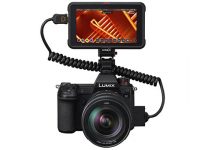We almost can’t talk enough about picture profiles and log gammas. There’s a lot to talk about and they keep changing. Even when they don’t “change” they get slight tweaks with each camera release and older cameras might get updates to include newer options. In today’s example, we have the Sony a7S III which now offers three notable choices for filmmakers: S-Cinetone, S-Log3, and HLG.
S-Cinetone might be the newest, but don’t count out S-Log3 and HLG. Play by Pause went and did a real-world test during the day and night with all these profiles to see when and where each one excelled. Maybe your favorite isn’t actually the best for your workflow.
To preface, we should run through the basics:
- S-Cinetone: 709-like look with “cinema” color, fastest workflow in post
- S-Log3: traditional “ultra-flat” log gamma with maximum dynamic range, longest workflow
- HLG: “instant” HDR profile, more DR than conventional profiles, ready to present
Daylight Tests
Color and dynamic range were tested in both day and night. Color during the day was not too surprising. S-Log3 still has that slight green tint for skin tones which S-Cinetone seems to clean up. Between the two is the HLG profile. All are very usable and not a big problem for filmmakers. S-Cinetone does appear to have more contrast in the shadows compared to the other two profiles.
Dynamic range tests included some over and underexposure options to see how the profiles handled a bit of push and pull. S-Cinetone had some limitations in overexposure, starting to lose some detail at 2 stops over. HLG appears to have more dynamic range than S-Cinetone, but again at 2 stops you are losing a little bit. S-Log3 was an interesting comparison, as they believe it doesn’t hold together as well as HLG.
Moving to a wider cityscape, the dynamic range tests showed that S-Cinetone can still handle a fair amount if exposed correctly. The HLG profile has a great deal of flexibility with a +/-2 stop range to correct exposure. S-Log3 also had similar performance.
Night Tests
Exposing by the ambient lighting will push a lot of the cameras and their ability to nail colors. S-Cinetone struggled a little bit as its need to nail things in-camera didn’t give much room to correct for the aggressive night lighting. S-Log3 maintained its preference towards green, though and HLG was in the middle.
S-Cinetone doesn’t do a great job in low-light since if you are off with exposure you might start breaking some parts of your shot. It’ll be a lot more work to get it right. HLG appeared to handle things well, though colors went off if you went too far over or under.
S-Log3 can struggle in low light as it really doesn’t like to be underexposed. If you can get the exposure there then you should definitely avoid log. Going with a more ready-to-use profile will get you better results. The extra dynamic range can help though, and considering you might have a wide range with lights in the background and very dark areas it can actually be the best.
HLG handles itself well here thanks to its dynamic range boost and still maintains decent color with a little bit of flexibility. Still need a bit of care, but it is easier to get right in camera than S-Log3.
Final testing is the ISO/noise performance. Each profile actually has slightly different base ISOs.
- S-Cinetone & HLG: Base ISO 100, High Base ISO 200
- S-Log3: Base ISO 640, High Base ISO 12800
Running through the ISO ranges you will see how the noise changes based on profile. I wouldn’t necessarily say one is worse than another, but good to see where the limits are.
Final Thoughts
S-Cinetone is a beautiful option that is practically ready to publish. It’s a good look, but you need to nail everything in camera. It’s the one real limitation.
S-Log3 is a whole other animal. It has a higher base ISO of 640, so you’ll have to be more on top of exposure and settings. Plus, it generally likes to be a little overexposed to get the cleanest image. We haven’t even gotten into how post-production will be heavy with the amount of grading that is required.
HLG is a bit of an in-between profile. Looks decent out of camera but still has some great dynamic range. They are super fans of HLG and I’ve used it myself for stuff where S-Log3 would’ve been a bit of overkill.
Still a lot of questions on S-Log3 vs HLG. Personally, I think S-Log3 handled properly gives you more to work with in post than HLG, but if you are working quick and still want an “HDR” profile, then HLG is a very nice option. S-Cinetone on the other hand is for fast workflows or you simply want something that looks good straight out of camera.
Which profiles do you prefer?
[source: Play by Pause]
Order Links:
Disclaimer: As an Amazon Associate partner and participant in B&H and Adorama Affiliate programmes, we earn a small comission from each purchase made through the affiliate links listed above at no additional cost to you.


